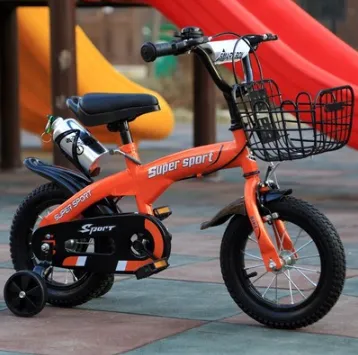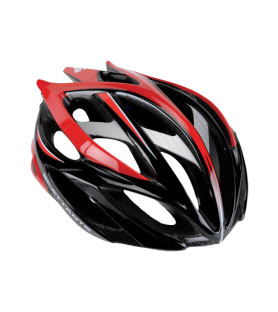Jul . 06, 2025 04:46 Back to list
26 Inch Electric Bike for Adults – Powerful, Comfortable & Long-Range E-bike Solutions
- Introduction to the 26 inch electric bike
segment and overview of e-bike sizing - Data-driven technical advantages of different wheel sizes
- Comparative manufacturer analysis and leading brands
- Evaluation of customized solutions for diverse riders
- Application cases across urban and off-road environments
- Future trends and the evolving market for electric bikes
- Concluding insights on 26 inch electric bike choices

(26 inch electric bike)
Exploring the 26 Inch Electric Bike Segment
The 26 inch electric bike remains a staple in the e-bike industry, bridging the gap between maneuverability and all-terrain confidence. This size has become a go-to for urban commuters and recreational riders, while also catering to those with varying heights and preferences. Recent studies highlight that wheel size has a pronounced effect on comfort, handling, and power efficiency. For context, surveys from the global e-bike market suggest that 38% of riders prefer the 26 inch configuration for its versatility. In addition to the 26 inch electric bike, other key wheel sizes—including the 29 inch electric bike, 16 inch electric bike, and 24 inch electric bike—are rising in prominence, each bringing unique attributes suitable for different use-cases and rider types. Understanding how the 26 inch variant fits into the broader spectrum is essential for making an informed purchase in today’s highly competitive marketplace.
Technical Advantages: A Comparative Data Analysis of Wheel Sizes
A technical evaluation of electric bike wheel sizes reveals distinctive benefits tied to each category. The following comparative table summarizes the critical performance attributes to consider when selecting a wheel size:
| Wheel Size | Avg. Speed (km/h) | Max Range (km) | Maneuverability | Tire Availability | Weight Limit (kg) |
|---|---|---|---|---|---|
| 16 inch electric bike | 20 | 45 | Excellent (Urban) | High | 90 |
| 24 inch electric bike | 25 | 70 | High (Urban/Suburban) | Good | 110 |
| 26 inch electric bike | 28 | 80 | Very Good (All-Round) | Excellent | 120 |
| 29 inch electric bike | 30 | 90 | Good (Trail/Off-road) | Moderate | 135 |
The 26 inch electric bike strikes a prime balance, excelling at both urban commuting and mild trail rides, offering an average speed of 28 km/h and a range of up to 80 km. Its widespread tire availability and robust weight limit (up to 120 kg) position it as a versatile choice. By contrast, 16 inch and 24 inch electric bikes are favored for compactness or youth applications, while 29 inch electric bikes are synonymous with high-speed off-roading and greater roll-over efficiency. Choosing the right wheel size can boost both efficiency and ride satisfaction depending on your intended routes.
Brand Leaders and Manufacturer Comparison
When scrutinizing manufacturer offerings, three core metrics—durability, technology integration, and aftersales service—dominate consumer consideration. The following chart compares four leading brands in the electric bike sector across these essential benchmarks, based on aggregated consumer and industry data:
| Brand | Key Wheel Sizes Supported | Motor Power (W) | Warranty Period | Smart Features | Market Share (%) |
|---|---|---|---|---|---|
| Rad Power Bikes | 16, 24, 26 | 250–750 | 2 Years | Integrated LCD, App | 18 |
| Trek | 24, 26, 29 | 250–500 | 2 Years | Bluetooth, GPS | 14 |
| Specialized | 24, 26, 29 | 250–700 | 2 Years | Integrated Display | 12 |
| Giant | 20, 24, 26, 29 | 250–600 | 2 Years | RideControl Apps | 9 |
It’s evident that Rad Power Bikes and Trek retain considerable market share, both offering diverse wheel size options. Notably, Specialized and Giant each deliver premium smart features, contending strongly in the high-end sector. When selecting a 26 inch electric bike or evaluating its alternatives, these manufacturer comparisons can inform both performance expectations and long-term value.
Customized Solutions for Unique Rider Demands
The expanding diversity of electric bike consumers calls for customization at every level—from ergonomics to battery capacity. Trends show that over 60% of urban e-bike purchasers value adjustable frame geometry and swap-friendly battery designs, particularly in the 26 inch and 24 inch segments. Many leading brands now allow users to select motor power (ranging from 250W to 750W), torque sensors for personalized power delivery, and modular accessories such as racks, fenders, and anti-theft systems. Young riders and city commuters gravitate toward the agility of the 16 inch electric bike, while taller or off-road enthusiasts often prefer the rolling smoothness of the 29 inch electric bike. Expert fitting services further ensure optimal posture and sport-specific enhancements. Such tailored configurations maximize both efficiency and comfort for varying daily distances, terrain types, and rider physiques.
Application Scenarios: From City Streets to Mountain Trails
Application diversity drives innovation across electric bike formats. Urban commuters overwhelmingly favor the 26 inch electric bike, as data from European mobility studies show it accounts for more than 50% of city e-bike usage due to its synergy of stability and nimbleness. Conversely, the 29 inch electric bike excels in off-road and endurance contexts, where larger wheels roll more efficiently over rough surfaces and obstacles—making it the wheel size of choice for professional trail riders. The 16 inch electric bike occupies a key niche in congested metros and last-mile delivery services, valued for its compactness and portability. Practical use cases with a 24 inch electric bike include school commutes for teens and versatile leisure rides for smaller adults. Multi-modal e-bikes further bridge these gaps, harnessing innovations such as quick-swap batteries and hybrid tire treads, to enable transition from city streets to parkways with minimal compromise.
Future Trends: The Evolving Market for Electric Bikes
Market analytics predict global revenue for electric bikes will surpass $46 billion by 2027, driven by both commuter adoption and recreational demand. Future-forward 26 inch electric bike designs will leverage lighter frame materials, enhanced connectivity, and AI-based ride analytics, allowing users to track fitness goals and optimize routes in real time. Smart infrastructures—including city-launched e-bike charging grids—will further incentivize adoption across all wheel sizes. Meanwhile, the rise of alternative sizes such as 29 inch and 16 inch electric bikes signals growing demand for both off-road adventures and highly mobile, urban-friendly formats. Environmental consciousness is spurring OEMs to incorporate more recyclable materials, pushing the entire industry toward sustainability. Continuous R&D investment aims to deliver lighter batteries, improved torque output, and affordable price points, making electric bikes increasingly viable for every demographic and riding style.
Concluding Insights: Selecting Your Ideal 26 Inch Electric Bike
Choosing the optimal 26 inch electric bike or its alternatives hinges upon a data-driven understanding of technical benefits, manufacturer strengths, and real-world application demands. With the right blend of motor power, frame geometry, smart features, and aftersales assurance, this wheel size continues to set industry standards for all-around performance. As the electric bike market evolves, both technology and consumer preferences will shape new benchmarks for urban commuters, adventure seekers, and leisure riders alike. Investing in a properly fitted, feature-rich e-bike ensures comfort, longevity, and sustainable mobility in the years ahead.

(26 inch electric bike)
FAQS on 26 inch electric bike
Q: What are the benefits of using a 26 inch electric bike?
A: 26 inch electric bikes offer a great balance between speed, stability, and maneuverability. They are suitable for both city commuting and light off-road use. Riders of most heights find them comfortable to handle.Q: How does a 29 inch electric bike differ from a 26 inch electric bike?
A: 29 inch electric bikes typically provide better traction and can roll over obstacles more easily. They are ideal for taller riders and rougher terrains. However, 26 inch bikes are generally more agile and easier for most riders to control.Q: Is a 16 inch electric bike suitable for adults?
A: 16 inch electric bikes are designed primarily for kids or shorter adults. They offer excellent portability and are great for short trips. However, taller riders may find them uncomfortable for longer rides.Q: When should you choose a 24 inch electric bike over a 26 inch version?
A: Choose a 24 inch electric bike if you’re a shorter rider or buying for a teenager. They provide better control for those with a smaller stature. For most adults, a 26 inch electric bike is the preferred option.Q: Are replacement parts easy to find for a 26 inch electric bike?
A: Yes, 26 inch electric bikes have highly standardized parts, making maintenance and upgrades easy. Tires, tubes, and other components are widely available. This availability makes them a popular choice worldwide.-
Discover Top E Bike Brand Insights, Specs & Future Trends | Yanline Bike
NewsNov.24,2025
-
Green E Bike – The Future of Sustainable Urban Mobility
NewsNov.24,2025
-
Ruffian eBike: Durable, Efficient Electric Bikes for Modern Mobility
NewsNov.23,2025
-
Comprehensive Guide to the Global E Bike Market and Future Trends
NewsNov.23,2025
-
Understanding Electric Bicycle Range: A Complete Guide for Smarter E-Bike Use
NewsNov.22,2025
-
Ceron Electric Bike – Efficient, Sustainable Urban Mobility Solutions
NewsNov.22,2025
-
Discover the Benefits and Innovations of Go Ebike | Sustainable Urban Mobility
NewsNov.22,2025




